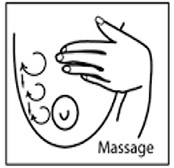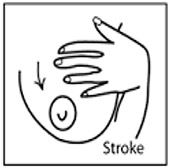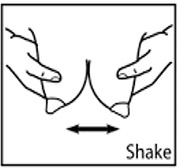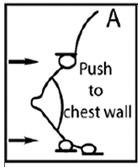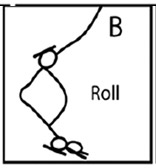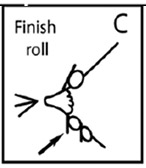Candidiasis (Thrush)
Candidiasis is an infection also known as Thrush, caused by a yeast fungus called Candida Albicans. It is a naturally occurring fungus within the mouth, stomach and bowel of the body. With lowered resistance an overgrowth of Candida can occur, especially in moist dark environments such as the nipples, milk ducts and in the mouth and diaper area.
Candidiasis can occur at anytime in the breastfeeding relationship, however; if you have a history of the following this may increase your chance of developing a yeast infection:
- Diabetes
- Mastitis
- Nipple damage, where the skin is broken
- Taken antibiotics during pregnancy or after your baby’s birth
- A vaginal thrush infection in your pregnancy
- Recent surgery
- Premature birth
- Overweight – with large intake of sugary foods / poor diet
- Low iron level in the blood – anaemia
- Steroid drug use (i.e., asthma)
The nipples may show no signs of yeast infection, however, the pain, which is intense, sharp or throbbing may be the only symptom. The baby may show NO visible sign of candidiasis but MUST BE TREATED AT THE SAME TIME AS THE MOTHER WITH AN ANTIFUNGAL PREPARATION.
Mothers symptoms:
- Sudden, severe, intense, unexplained pain during breastfeeding, which may continue after the breastfeeding. This does not improve when the baby is positioned correctly at the breast.
- Burning, hot, itchy nipples.
- Cracked nipples, may appear swollen, one or both may be affected.
- Throbbing, flaming, knife-like, sharp pain which can be unbearable
- Changes in colour to the nipple and aereolar area, to light pink, or dark red.
- Flaky skin or a shiny appearance around the breast and or nipple area.
- White spots or small blisters on the nipples.
Baby's Symptoms:
- A diaper rash which looks fiery red, with pustules appearing raised and or cracked skin.
- Visible Candida seen on the mouth, gums and inside of the cheeks. White creamy soft plaque, which looks like milk curds, but which cannot be easily washed off.
- Fussy or 'gassy' at the breast. Baby may refuse to breastfeed - or may for a few moments breastfeed then pull the breast and begin to cry, due to a sore mouth.
Treatment and prevention of recurrent candidiasis
- Continue breastfeeding. Weaning should not be necessary.
- Strict hand washing, frequently before breastfeeds, after nappy changing and before expressing milk to prevent the Candidiasis reoccurring.
- Hand express the milk for a short period if the pain is severe.
- Ensure correct positioning of the baby at the breast. Offer short frequent feeds. Feed off the least sore side first, if there is one. Pain tablets may be needed.
- Do not express milk onto the nipples after breastfeeding; rinse the nipple area with water to remove any milk then air dry. Change nursing pads frequently.
- If using a breast pump, ensure all parts are cleaned with washing-up liquid, including a daily boiling for at least 20 minutes of the parts that come into contact with the breastmilk.
- Do not freeze your milk whilst you have an infection as later this may re-infect the baby. Freezing does not destroy the Candida fungi.
- Wash all bras and towels in hot water above60°C. Dry bath towels after use in the sun and change daily. Use separate towels for the family. Wear a clean bra every day.
- Avoid sugary foods i.e. sucrose, honey, artificial sweeteners, chocolates, fermented foods like bread, mushrooms, wine and vinegars. Reduce diary produce except natural yoghurt.
- Pacifiers / dummies and rubber teats; must be boiled at 100°C daily for 20 minutes along with any teething toys baby’s may use. Discard and replace after one week,
- Expose the diaper area for a few hours each day. Use water only to clean the baby’s skin. Apply antifungal cream 4-6 times a day.
- The oral gel or liquid which is prescribed for the baby must be applied after breastfeeds with a clean finger or dropper, 4 times a day. Ensure that the medication is applied to the upper and lower gums, tongue and top of mouth.
- If you are tandem feeding an older child, this child must also be treated. If the father is symptomatic, visible or not, he should also receive the same therapy.
Maternal Medication -symptoms may increase within the first 2 days
Apply the medication as ordered to the nipple area after breastfeeds. A very small amount is required. Follow medication instruction. Application may be 6 times a day for 2 days reducing to 4 times a day, for a minimum of 14 days even if your symptoms disappear. The cream does not need to be washed off prior to the next breastfeed. Medication may be changed if pain continues after 5 days.

